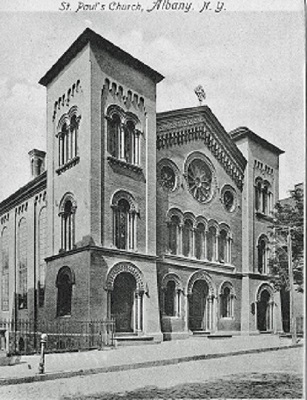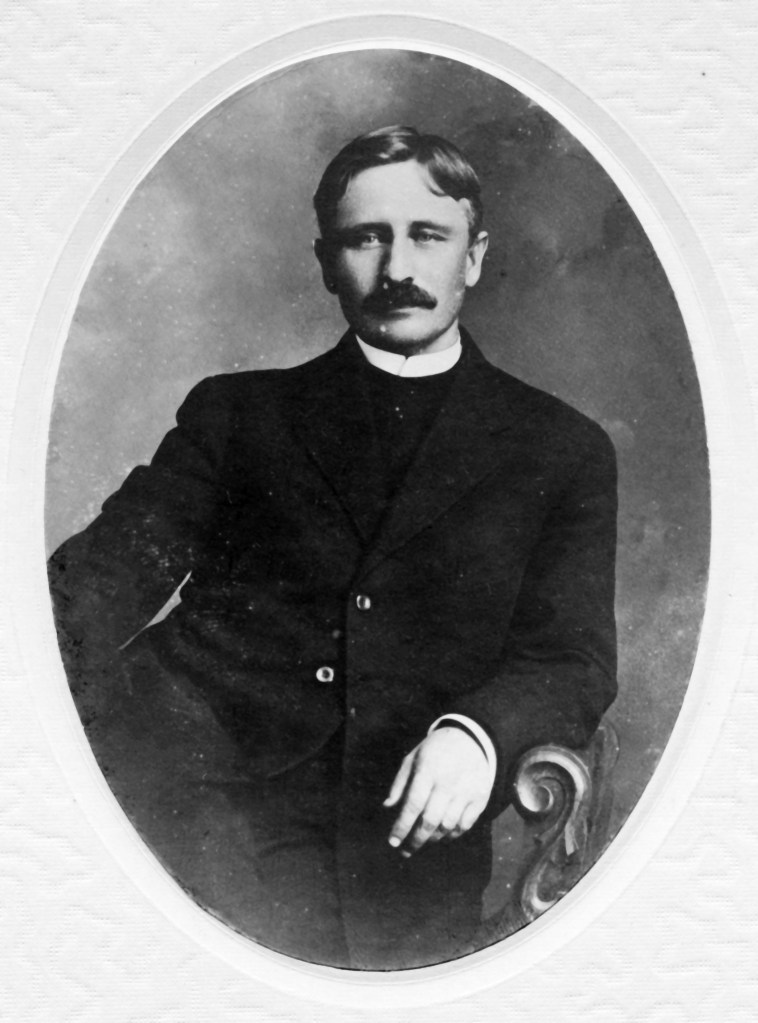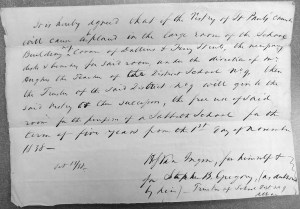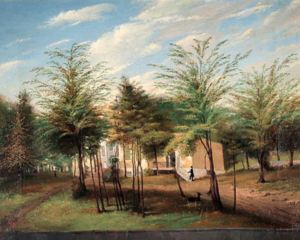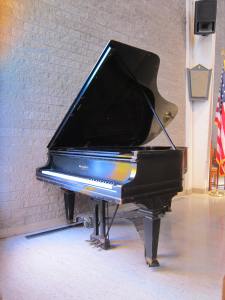Last year, Jennifer Johnston shared with us the program from St. Paul’s 1990 production of “Fat, Fat Jehoshaphat.” Now Jennifer has made another discovery: a brochure produced over 60 years ago as part of a St. Paul’s stewardship campaign. The leaflet includes photographs of a typical Sunday at St. Paul’s, giving us a view of the state of the parish in that period.
This 1955 stewardship campaign was called “Loyalty Week,” beginning on November 13 of that year. This brochure was distributed, and “The Messenger” (which was mailed weekly to every household) encouraged families to bring their pledge cards to church on Sunday. The preacher that day was Arthur R. McKinstry, rector of St. Paul’s from 1927 until 1931, and by this time the Bishop of Delaware.

Arthur R. McKinstry
This was only nine years after the end of World War II, at the height of the Red scare (the Army–McCarthy hearings had been held the previous year), the year after the armistice that paused (but did not end) the Korean war, and at the beginning of the Cold War. With both the United States and the Soviet Union testing nuclear weapons, the United States in January of that year had begun development of intercontinental ballistic missiles. We have to agree with Deacon Mole (a character in the Walt Kelly comic strip “Pogo”) that the newspapers in that period were “Full of Doom, Gloom and rumors of Boom.” 
No wonder, then that prominently placed on the brochure’s front page, in all capital letters and a bold typeface, is the warning “CIVILIZATION IS IN PERIL IN AN ATOMIC WORLD, IF THE WORLD IS UNCHRISTIAN!”
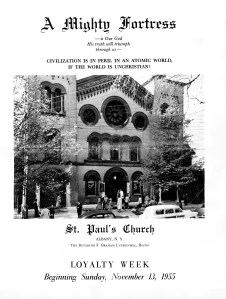
Loyalty Week 1955: Brochure Cover
Once we flip to page two, however, the view is much sunnier. There are five photographs:
Nave, with 324 worshipers:
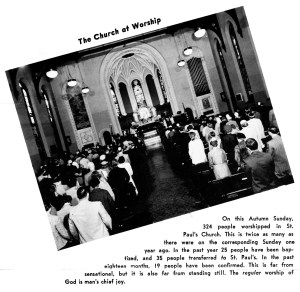
Loyalty Week 1955: The Nave
A Sunday school room:

Loyalty Week 1955: Sunday School Classroom
Women’s luncheon:
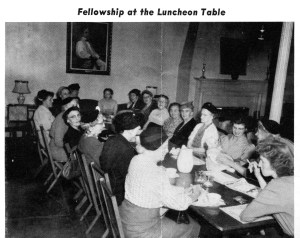
Loyalty Week 1955: Luncheon
Women’s group, at work sewing):
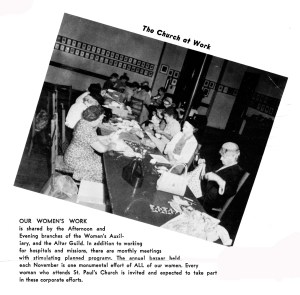
Loyalty Week 1955: The Church at Work
There are no corresponding photographs of men’s participation, but a text block assures us of their active involvement.

Loyalty Week 1955: Men’s Activities
Chancel Choir and clergy (the rector, F. Graham Luckenbill and his assistant, Robert J. Evans). The choirmaster, Clarence A. Hollister, is on the far right of the middle row.

Loyalty Week 1955: Chancel Choir and Clergy
The accompanying text describes an active, growing parish, and includes annual statistics of 25 baptisms, 35 transfers and 19 confirmed. “This is far from sensational, but it is also far from standing still.” The author highlights increases over the previous year with both Sunday attendance and Sunday School enrollment doubled. These are certainly noteworthy increases, but one wonders why that particular comparison is made.

Loyalty Week 1955: Note from the Vestry
Milton W. Hamilton’s 1977 history of the parish provides the necessary context: the previous years had been a very difficult one for St. Paul’s:
The Reverend Oliver D. Carberry, who became rector in 1948, was an able and effective preacher, but he became involved in a controversy over church music, in which he was opposed by several vestrymen. There were other disagreements and several resignations from the vestry. Feelings ran high, and a number of families left the church. A call by one vestryman to stop this trend was tabled. The Reverend Mr. Carberry resigned February 22, 1954, to accept a call to St. Paul’s Church, Fairfield, Conn. The loss in membership, however, was reflected in less financial support. A contributing factor was that now few members lived in the downtown area. In 1948 a rectory had been purchased in western Albany. The Reverend F. Graham Luckenbill (1954-1958) recognized the need for a parking area, and it was necessary to take out a large bank loan to buy a lot for this purpose.
The impression of a thriving parish in 1955, then, relied on a comparison with the previous year, which had been a disaster. And the long term problems that had weakened St. Paul’s (white flight from downtown Albany, the decline of the neighborhood, loss of families because of controversies and debt) could not be easily overcome.
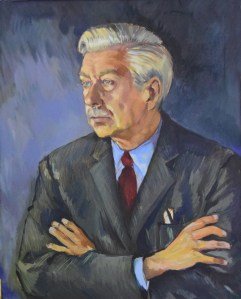
Clarence A. Hollister
In addition to the resignations of the rector in 1954, choirmaster Walter Witherspoon had resigned in September 1955, to be replaced by Clarence A. Hollister.

Bishop Frederick L. Barry
We have not found records of the results of this Loyalty Week, but the long-term demographic changes in the neighborhood would only continue to worsen for the next few years. Within three years, the parish was so weakened that when F. Graham Luckenbill resigned as rector in 1958, Bishop Barry appointed Luckenbill’s curate, Donald I. Judson, as priest-in-charge, discouraged the vestry from calling a new rector, and suggested that St. Paul’s either merge with another parish, or construct a new building elsewhere in the city. As we saw in an earlier post, the vestry rejected Bishop Barry’s advice, and instead called Nelson F. Parke.
But in October 1955, those challenges seemed surmountable, and we can appreciate the enthusiasm and vision of those who organized Loyalty Week and produced this brochure, promoting an enthusiastic view of St. Paul’s future.
My thanks to Jenn! What other treasures may she be able to find?
